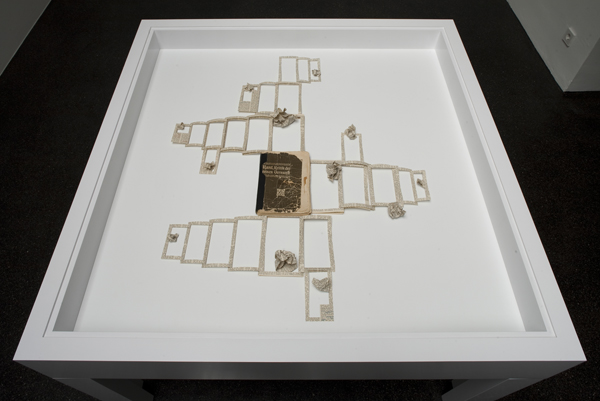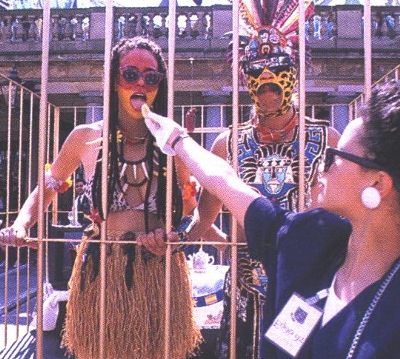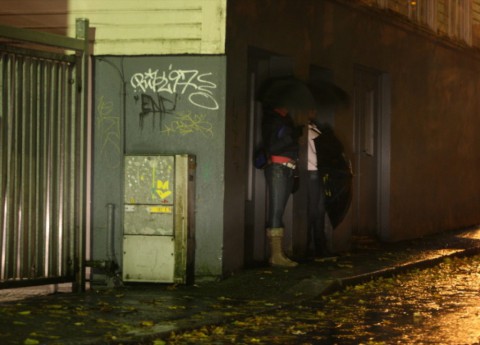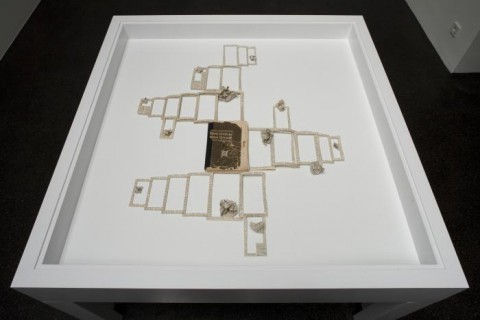The exhibition ‘See Reason’ is the first tentative step of Stedelijk Museum Bureau Amsterdam in a long-term trajectory that will define our programming for the coming period. ‘Project 1975’ raises questions such as: what are the criteria for art in today’s new, geopolitical context? Is such a question even relevant in the postcolonial era? Alternatively, should we speak of a transnational era? Is it even possible to formulate new paradigms, new terminologies for art? Click here to read more about ‘See Reason’.
In every newsletter of the exhibitions of Project ‘1975’ a guest curator or art critic will write an essay on the topic of post-colonialism in contemporary art. The first one to write is Lucrezia Cippitelli, professor of Aesthetics at the Art Academy of L’Aquila, a visiting scholar at Cornell University.
Eurocentrism and its Critique: from Third World Perspectives to Global Internationalism
“Eurocentrism is anti-universalist, since it is not interested in seeking possible general laws of human evolution. But it does present itself as universalist, for it claims that imitation of the Western model by all peoples is the only solution to the challenges of our time.”1 Samir Amin’s incisive analysis of the concept of Eurocentrism traces its origins back to the end of the 1970s. Even if it seems to perfectly depict the world of the early 21st century, this notion first circulated at a time when the global process of decolonization was nearing its conclusion and the postcolonial critique was finding a place in the Anglo-Saxon academic world.2 In his seminal essay published in 1978, the Egyptian Marxist economist uncovers the roots of a phenomenon which he describes as specifically Modern – strongly rooted in the European Renaissance – and built up in only five centuries, in order to justify the powerful and impregnable one-dimensional cultural system of the modern world. The product of this ideological process is, according to Amin, a Western history that shows a progression form ancient Greece to Rome, to feudal Christian Europe, to capitalist Europe.3 It is a cultural construction of a one-dimensional continent (white, Christian, scientifically progressive, in constant philosophical development, enlightened, capitalist, free, democratic), which furthermore over the centuries invented and defended the abstract idea of a dominant West and its counterpart, the Other, the Rest, the Different, and often the Enemy.4
George Osodi is an artist who has taken the relation between Europe and Africa as a point of departure. The work of the Nigerian-born Osodi, whom most will know from his participation in Roger Buergel’s documenta 12, tells about the effects of globalisation on people’s lives with great empathy: his art concerns Africa, but it also accentuates the continent’s involvement in transnational processes.
Click here to read Kerstin Winking’s article ‘The Ethical Revolution’ on the work of George Osodi.
Project ‘1975’ entails a theoretical program in which the disperse notions of post-colonialism in contemporary art are challenged. The kick-off of the theoretical backbone of Project ‘1975’ was a lecture by Paul Goodwin, curator of cross-cultural programmes at the Tate Britain.

The exhibition GEO-graphics. A Map of Art Practices in Africa, Past and Present is the largest part of the Visionary Africa festival in the Bozar Center for Fine Arts in Brussels, held on the occasion of the 50th anniversary of the independence of the Democratic Republic of Congo and 16 other African countries. It is also the first stage in a four-year collaboration between the art center and the Royal Museum of Central Africa in Tervuren, that characteristic museum of colonial museology that will soon be subjected to reconstruction and expansion.
Click here to read the full review ‘The many ambitions of GEO-graphics’ on the website of Nafas Art Magazine.
In a review for Nafas Art Magazine, Jelle Bouwhuis and Kerstin Winking discuss the ninth edition of the Dak’Art Biennial. Unlike the other editions, the exhibition was now divided into an international and a retrospective part. This latter part consisted of works of artists who won the Grand Prix Leopold Sedar Senghor, amongst others Mounir Fatmi (2006), Viyé Diba (1998) and also the late Moustapha Dimé. Because of this retrospective emphasis, the international part of the exhibition was a small presentation of only 27 artists. However, the work of the 2010 Senghor Award, the Congolese-living in France Moridja Kitenge Banza, was memorable, Bouwhuis and Winking argue.
Jelle Bouwhuis discusses Hala Elkoussy’s recent work ‘Myths & Legends Room – The Mural’. The work measures three by nine meters, and deals with the reality of life in Cairo, the city that lies at the base of almost all of Elkoussy’s works. Elkoussy produced a collage-landscape out of photographs from several contexts. Artistically, this large mural therefore exploits the ideas of the photomontage that has become ubiquitous through the advertisement industry. However, for a better understanding of the Mural’s creative background, first reference has to be made to commemorative wall paintings such as those in the National Military Museum in Cairo depicting various war scenes from Egypt’s history, the heroism of the military, and its popular support.
Click here to read the full article on the website of Nafas Art Magazine.










